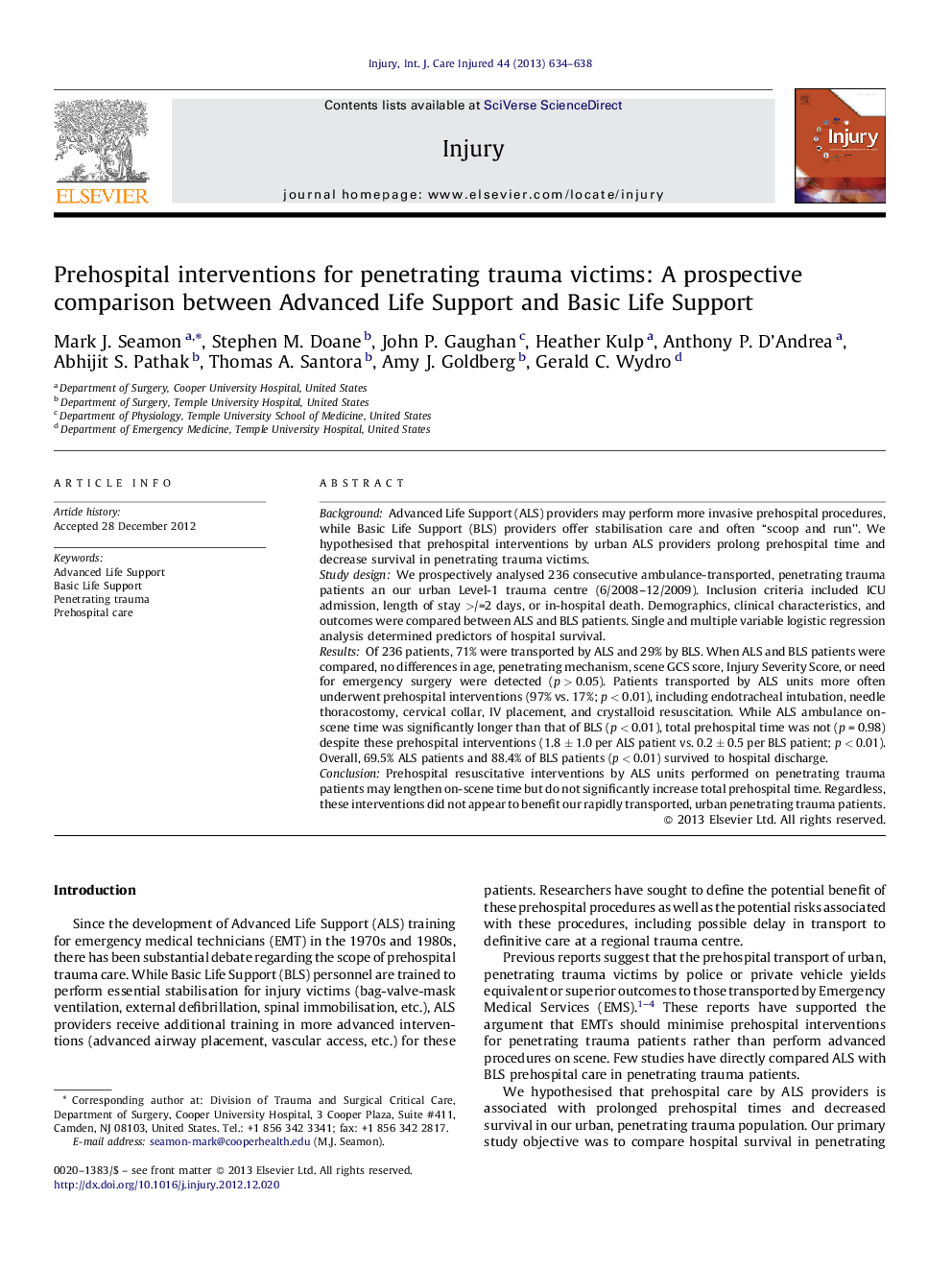| Article ID | Journal | Published Year | Pages | File Type |
|---|---|---|---|---|
| 6083936 | Injury | 2013 | 5 Pages |
BackgroundAdvanced Life Support (ALS) providers may perform more invasive prehospital procedures, while Basic Life Support (BLS) providers offer stabilisation care and often “scoop and run”. We hypothesised that prehospital interventions by urban ALS providers prolong prehospital time and decrease survival in penetrating trauma victims.Study designWe prospectively analysed 236 consecutive ambulance-transported, penetrating trauma patients an our urban Level-1 trauma centre (6/2008-12/2009). Inclusion criteria included ICU admission, length of stay >/=2 days, or in-hospital death. Demographics, clinical characteristics, and outcomes were compared between ALS and BLS patients. Single and multiple variable logistic regression analysis determined predictors of hospital survival.ResultsOf 236 patients, 71% were transported by ALS and 29% by BLS. When ALS and BLS patients were compared, no differences in age, penetrating mechanism, scene GCS score, Injury Severity Score, or need for emergency surgery were detected (p > 0.05). Patients transported by ALS units more often underwent prehospital interventions (97% vs. 17%; p < 0.01), including endotracheal intubation, needle thoracostomy, cervical collar, IV placement, and crystalloid resuscitation. While ALS ambulance on-scene time was significantly longer than that of BLS (p < 0.01), total prehospital time was not (p = 0.98) despite these prehospital interventions (1.8 ± 1.0 per ALS patient vs. 0.2 ± 0.5 per BLS patient; p < 0.01). Overall, 69.5% ALS patients and 88.4% of BLS patients (p < 0.01) survived to hospital discharge.ConclusionPrehospital resuscitative interventions by ALS units performed on penetrating trauma patients may lengthen on-scene time but do not significantly increase total prehospital time. Regardless, these interventions did not appear to benefit our rapidly transported, urban penetrating trauma patients.
